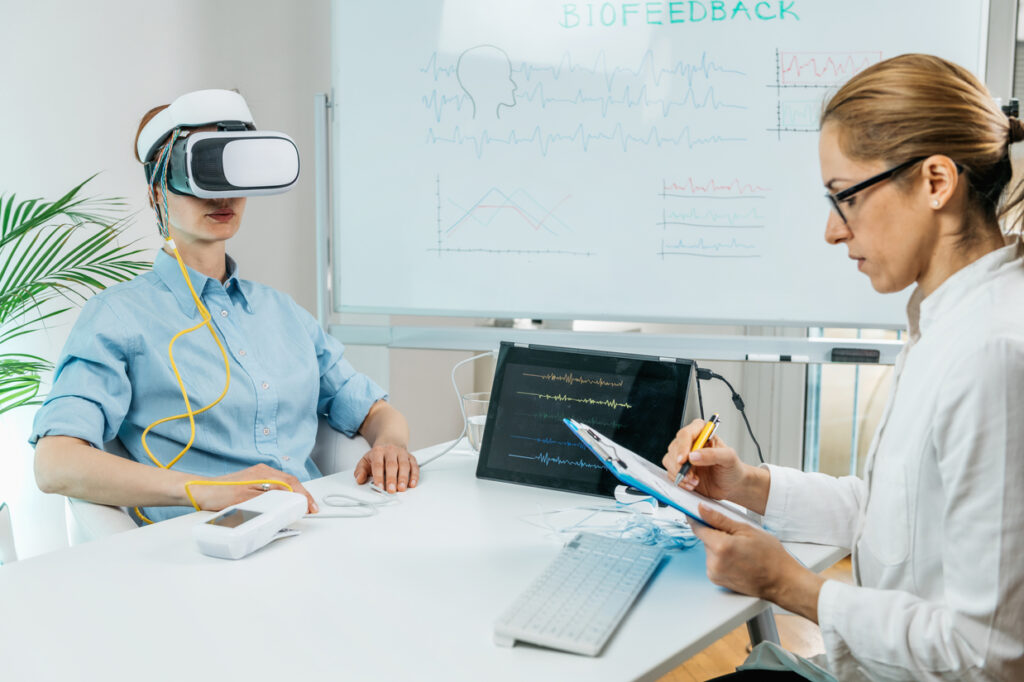Examples of qualifying software as a medical device under the EU MDR
Whether your software is considered as a medical device under the EU MDR is a key thing to determine as the wrong decision can have serious legal and financial consequences for your company. On one hand, according to the EU MDR, software in its own right, when intended to be used for one or more medical purposes, qualifies as a medical device. On the other hand, software for general purposes, even when used in a healthcare setting or for lifestyle and wellbeing purposes, is not considered as a medical device. Everything depends on its Intended Use.
However, very often, especially for new technologies, classifying software as a medical or non-medical device can cause confusion and may be tricky to figure out.
To understand the rules better, below you’ll find a comprehensive list of the criteria followed by a few real-life examples.
Understanding EU MDR and software as a medical device regulation
Before we go to the examples, let’s make a brief reminder about what EU MDR is and how it regulates software as a medical device.
The European Union Medical Device Regulation (EU MDR) is the legislative framework that governs the safety, performance, and market access of medical devices within the European Economic Area. Replacing the older Medical Device Directive (MDD), the MDR introduces more rigorous requirements, especially in light of technological advancements – most notably, the growing role of software in healthcare.
Under EU MDR, software is explicitly recognised as a medical device if it is intended by the manufacturer to be used for medical purposes, such as diagnosis, prevention, monitoring, prediction, prognosis, treatment, or alleviation of disease. This includes stand-alone software (e.g., mobile apps or cloud-based platforms) as well as software that drives or influences the use of a physical device.
The regulation applies stricter classification rules for software, requiring many digital health applications to undergo higher scrutiny than under the previous directive. For instance, software used to make therapeutic decisions or monitor vital physiological processes often falls into higher risk classes (Class IIa, IIb, or even III), demanding robust clinical evidence and conformity assessments.
By clearly defining and regulating software as a medical device, the EU MDR aims to ensure that health-related software meets the highest standards of safety and performance.
Guidelines to determine whether your tool qualifies as software as a medical device or not
Software as a medical device is when it:
- is explicitly named as one in the EU MDR
- controls or influences a medical device
- serves the “post-processing” (e.g. for an ECG) or data preparation
- calculates output signals or output values
- serves the support of diagnostic or therapy
- serves the “objective” diagnosis or treatment
Software as a medical device is not when it:
- is used for administrative purposes (e.g. managing patient data)
- is used for training doctors (e.g. training software with medical knowledge)
- is used for general maintenance of medical devices or their components (however, sometimes can be treated as a medical device accessory)
- is used for development or production tools (however, such must be validated)
- represents a proprietary operating system
Let’s now take a look at how to classify software as a medical device in practice.
Examples of qualifying systems as a medical device software
#1 Hospital Information Systems as a medical device software
Hospital information systems support the process of patient management: from patient admission, through scheduling appointments, to insurance and billing purposes.
According to the EU Medical Device Regulation, such Hospital Information Systems aren’t qualified as software as a medical device. However, they may be integrated with additional modules, which in turn can be classified as medical device software in its own right.
For example, a Roentgen medical device may automatically send a patient’s medical results to the Hospital Information System, where through software application it’s available for the medical staff and the patient. In this case, the Roentgen module is classified as a software as a medical device, while the Hospital Information System itself isn’t. That’s why it’s so important to be able to tell the difference between what is and what is not classified as a medical device software according to the EU MDR rules. Especially so, that the risk or any kind of corner cases and integration failures, etc., always rests with a medical module.
#2 Decision Support Software for medical purposes
Decision Support Software usually combines general medical information databases and algorithms with patient-specific data about a person’s state. Such software and tools are intended to provide healthcare professionals and users with recommendations for clinical evaluation, diagnosis, prognosis, monitoring and treatment of individual patients, thus they are classified in the category of software as a medical device.
An example of decision support software for medical purposes are radiotherapy treatment planning systems. It is a software intended to calculate the dosage of ionising radiation to be applied to a specific patient. Since such software controls, monitors, and directly influences the source of ionising radiation, with the new MDR regulation it falls under software as medical device classification rules.
A similar example are drug planning systems used in chemotherapy. Its intended purpose is to calculate the drug dosage, so that the appropriate level is administered to a specific patient. They are also classified under MDR requirements with other software as medical devices.
Another example of decision support software considered to be software as a medical device is Computer-aided Detection System. This medical device intended purpose is to provide information, which may suggest or exclude medical conditions, for example by using artificial intelligence to automatically analyse x-ray images or interpret ECGs.
#3 Electronic Patient Record System as a medical device software
Electronic patient record systems’ intended purpose to store, archive and transfer electronic patient data and records. For example, an electronic patient record that simply replaces a patient’s paper file does not meet the definition of a software as a medical device. As long as these systems aren’t used for analysis or decision-making based on the data stored, they are not qualified as a medical device software.
However, other software changes with modules such as an image viewer that can be used for diagnosis based on digital images used with an electronic record system may fall under the software as a medical device regulation.
#4 Telemedicine systems under the software as a medical device regulation
A communication system, usually based on software for general purposes, with intended medical purposes that can be used for transferring both medical and non-medical information, does not fall under the definition of software as a medical device, as long as it’s not used for diagnosing.

However, other modules with medical purposes used with such a communication system might be qualified in their own right as medical device software under MDR requirements. These are, for example:
- Telemedicine systems – for which the intended medical purpose is to enable remote monitoring and healthcare delivery using safe and effective software.
- Telesurgery – with the intended purpose of conducting a surgical procedure remotely. with the intended purpose of conducting a surgical procedure remotely. For this, the medical device industry can utilise virtual reality technology to support remote surgeons in controlling surgical robots during procedures.
#5 Web systems for data monitoring of medical device software
A web system for the monitoring of clinical data typically interacts with a medical device (e.g. implanted devices or homecare medical devices) and uses a transmitter to send the information over the internet, a landline telephone or a mobile network.
The information is collected and stored on a web server usually run by an external party who is the general manufacturer of the system. Authorised health professionals and patients can get access to the information through the internet connection.
However, for example, modules intended to monitor the performance of medical devices that are connected to such a web system are qualified as software as a medical devices according to MDR requirements. Such modules can provide the clinical performance evaluation and monitor failures that could affect the efficiency of the medical device. Such products include, for example, web systems for the monitoring of active implants or Intra Cardiac Defibrillators (ICDs).
Yet, modules intended to perform administrative monitoring of the non-medical performance of medical devices do not fall under the software as a medical device definition according to the MDR classification rules. This also applies to software for monitoring medical devices for the purpose of maintenance and repair.
#6 Home care monitoring (wired or mobile)
Software intended for archiving patient’s medical results or for transferring results obtained from medical devices used in a home environment to the healthcare provider is not a medical device because the results are available, readable and understandable by the user without the intervention of the software.
Does your solution fall under the software as a medical device regulation?
To figure out the answer to this question you should first define the intended use of your product and check if it matches the definition of a software as a medical device according to the MDR classification rules. As the next step, you should check Annex XVI of the EU MDR and see if your product matches any of the definitions included there.
If you’re not sure how to define whether your solution is a software as a medical device or interpret the definitions in relation to your product, we can help you. Reach out to us using the contact form below, and we’ll get back to you as soon as possible.
FAQ
Software as a medical device (SaMD) is defined under the EU MDR as software intended to be used for one or more medical purposes, such as diagnosis, prevention, monitoring, prediction, or treatment of a disease. It is considered a medical device even if it operates independently of any hardware component.
Under the EU MDR, common examples of SaMD include mobile apps for clinical decision support, software for medical image analysis, and tools for monitoring chronic diseases like diabetes or cardiovascular conditions. These must meet strict regulatory requirements to ensure patient safety and performance efficacy.
SaMD functions independently from hardware devices, whereas embedded software is part of and controls a specific physical device, such as a pacemaker or MRI machine. The EU MDR treats these software types differently, applying distinct classification rules based on intended use and risk level.
SaMD is classified according to EU MDR Annex VIII, using rules that consider the intended purpose and potential risk to the patient. Depending on its classification (Class I to III), the software may require involvement of a Notified Body and must demonstrate compliance through a Clinical Evaluation Report (CER), risk management file, and other technical documentation.
Developers must ensure compliance with EU MDR requirements such as software lifecycle management (per IEC 62304), clinical evaluation, cybersecurity (per MDR Annex I), and usability engineering. Robust documentation, post-market surveillance planning, and CE marking are essential for legal market access.
About the author
Recommended articles
Contact us





